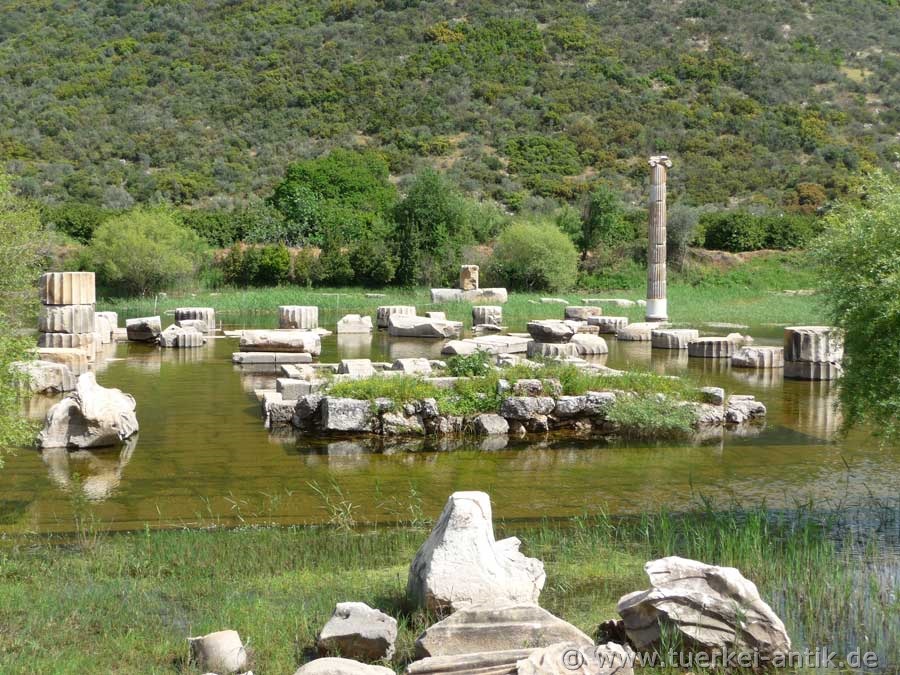 |
| Clarus in Ionia | |||
|
|
| ||
| The Temple of Apollo in autumn | |||
|
Clarus (Latin; English: Claros) was an important oracle place of the god Apollo on the west coast (today about 16 km west of Selçuk). It belonged to the town of Kolophon, about 13 km away, although it was much closer to the town of Notion. |
|||
|
|
|||
| Propylon and Exedra | |||
|
|
|||
|
The oldest evidence of Claros dates back to the 7th century B.C., but the oracle is probably significantly older than the Greek colonization.
|
|||
|
|
|||
| Vault of the Temple of Apollo | |||
|
According to an ancient legend, Kalcha's visionary was predicted to die if he met a visionary superior to him. At
Claros, the seer met Mopsos, and Kalchas asked him to tell him the number of fruits on a fig tree. When the answer Mopsos gave was confirmed to the last fig, Kalchas died. Mopsos is also considered the legendary founder of
Claros.
|
|||
|
|
|||
| The altar of Apollo | |||
|
Claros was rediscovered by archaeologist Carl Schuchhardt towards the end of the 19th century. The systematic archaeological development began at the beginning of the 20th century by Theodor Macridy and Charles Picard. From 1951 to 1960 Louis Robert and Roland Martin dug here. From 1988 to 1997 further French excavations were conducted by Juliette de La Genière. |
|||
|
|
|||
| Fragments of the cult statues of Artemis and Leto | |||
|
|
|||
|
Claros is particularly worth seeing because of the extensive fragments of the larger-than-life Hellenistic cult statues, which - unlike most archaeological excavation sites - were put back in their original place.
|
|||
|
|
|||
|
|
|||
|
The Temple of Apollo in April |
|||
|
|
|||
|
If you want to visit the excavation site of Claros, it is recommended to visit it in autumn. In spring the groundwater is so high that the temple and the surrounding area are up to 2 meters high under water. |
|||
| Photos: @chim | |||
| Translation aid: www.DeepL.com/Translator | |||
| Source: Wikipedia and others | |||
|
|
|||


